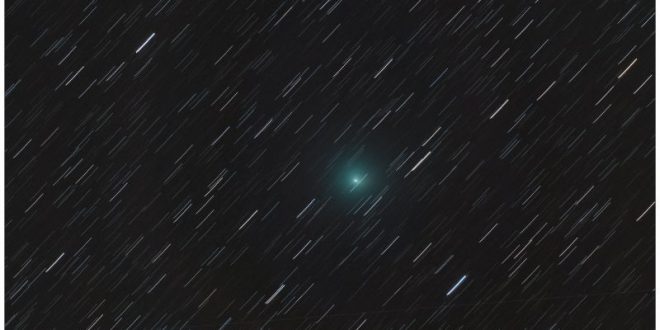Prepare yourself for a close encounter with a comet, as one is passing closer to Earth than it ever has before.
Comet 41 P/Tuttle-Giacombini-Kresák (catchy) will be as close as 13.2 million miles from our planet during a six-day fly-by from March 29 to April 3.
The comet’s perihelion point, which is that part of its orbit taking it closest to the sun, lies just outside Earth’s orbit. This year, the perihelion passage occurs April 12, when the comet will be 97.1 million miles (156.3 million kilometers) from the sun. But because the orbit of the comet nearly parallels the orbit of Earth at this point, there will be a six-day period — from March 29 through April 3 — when Tuttle-Giacobini- Kresák will be very near to its closest point to Earth.
The comet will, in fact, be closest to Earth on April Fools’ Day (April 1); just about 13.2 million miles (21.2 million km) away.
During this two-week stretch, the comet will be passing across the stars of Ursa Major and Draco, circumpolar constellations that are perpetually above the northern horizon for most viewers in the Northern Hemisphere. So that will make the comet an easy target from dusk through dawn through mid-April.
If you don’t have a telescope handy, that’s ok. Slooh will be live streaming it online. You can watch it by clicking here.
Agencies/Canadajournal
 Canada Journal – News of the World Articles and videos to bring you the biggest Canadian news stories from across the country every day
Canada Journal – News of the World Articles and videos to bring you the biggest Canadian news stories from across the country every day



